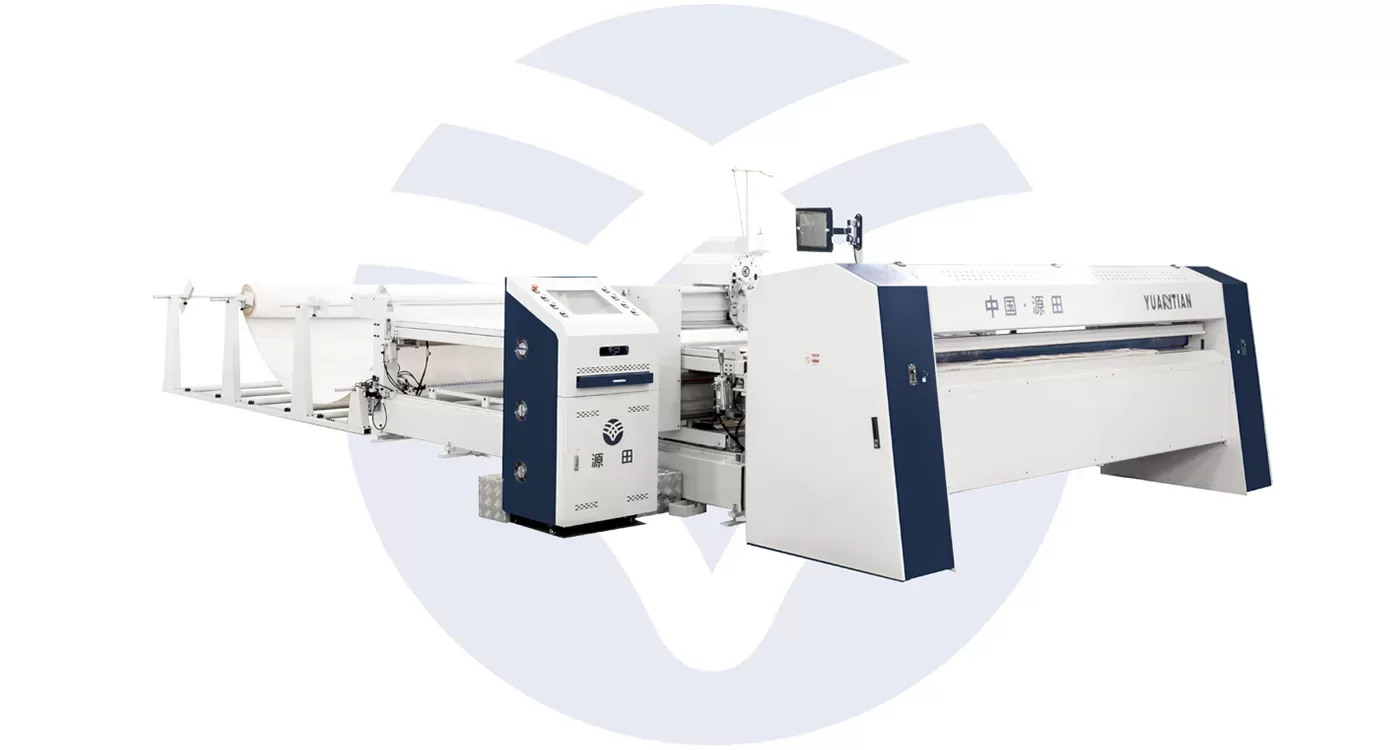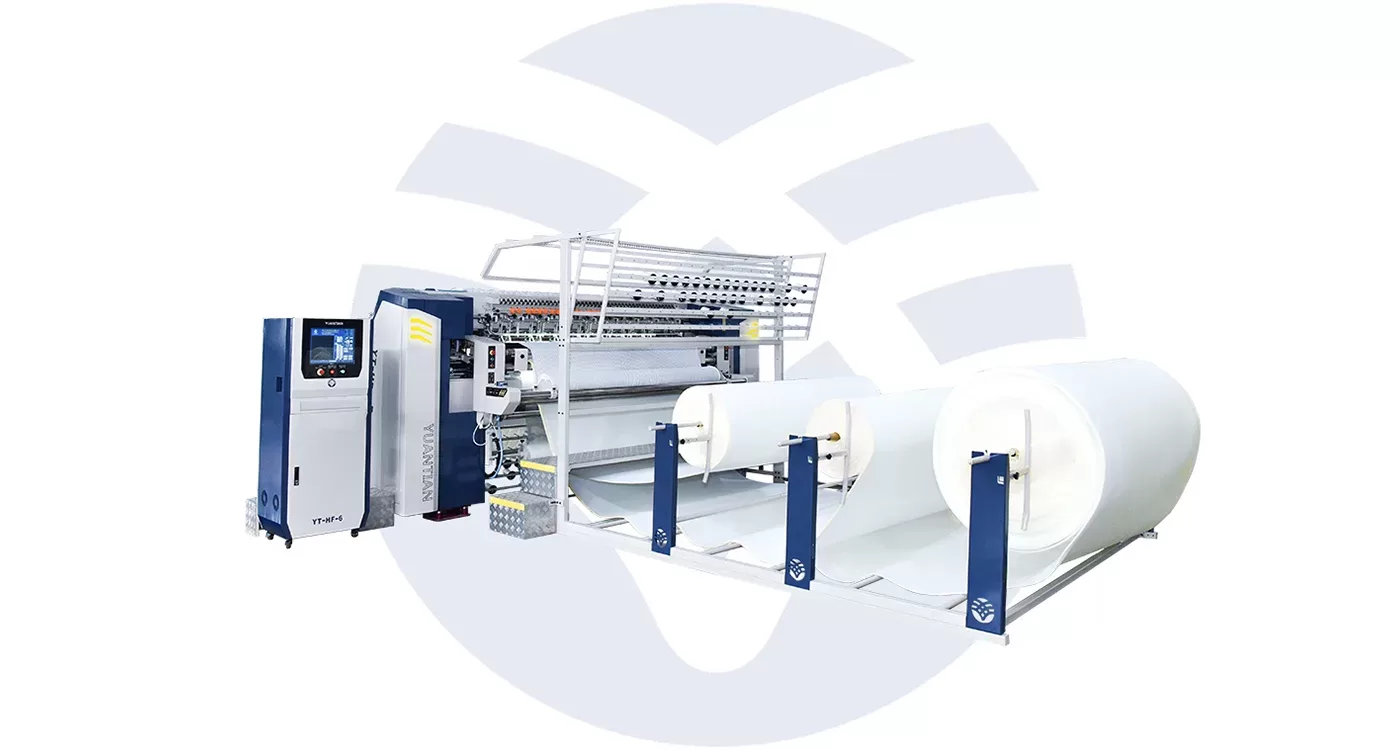- Home » Upgrading Your Mattress Quilting Equipment: When and Why It’s Necessary
There are so many specialized machines involved in mattress manufacturing, quilting equipment is one of the major determinants of the quality and aesthetic appeal of the mattress. Like all machinery, mattress quilting equipment can easily start to feel outdated or inefficient, making both the production capacity and the product quality suffer as a result.
Investing in mattress quilting equipment upgrades is a huge step, it may improve efficiency, enhance the product quality, and thus translate into cost savings over time. This article looks at some of the reasons and signs that show when an upgrade is necessary and why this could be important in maintaining competitiveness at the market level.
Understanding Mattress Quilting Equipment
The Role of Quilting in Mattress Manufacturing
Quilting describes the stitching together of more than one layer of fabric and padding into a mattress surface that is attractive and serviceable. Quilting pattern contributes not only to comfort in a mattress but also to the decorative element in its design. Mattress quilting machines, in various combinations featuring needles, threads, and fabric-feeding systems, create elaborate patterns that add to the aesthetic values of the product.
In most cases, quilting machines manage several layers: the top fabric, padding, and bottom fabric are stitched together in a single process. The machine can stitch lines from something simple to complex patterns. The pattern influences not only the looks but also the way the padding distributes air inside the mattress and provides additional comfort or support features to the mattress.
Types of Quilting Machines
Mainly, there are two kinds: multi-needle quilting machines and single-needle quilting machines.
Multi-Needle Quilting Machines: These machines are fitted with many needles, which can sew a number of lines at once, thus allowing for higher production speeds. They are very suitable for high-volume production in mattress manufacturing and can do simple quilting work quite well.
Single-Needle Quilting Machines: These machines are those that use one needle, moving along according to a previously programmed path. This results in the making of more intricate and detailed patterns in quilting. While they are slower compared to multi-needle machines, they offer greater versatility and are preferred in premium or customized mattresses.
Both types of machines are very important in the line of production, but when they are obsolete or can no longer serve present production needs, it is time to upgrade to higher levels of operation.

Indicators That It’s Time to Upgrade Your Quilting Equipment
Declining Performance and Increased Downtime
Probably the most obvious sign that new quilting machinery is needed is when obvious degradation in performance becomes evident. The older models tend to run more sluggishly, or their stitch repetition becomes uneven, leading to defective results in the finished mattress. Where there are frequent breakdowns, or one repair after another is continually being made, this too creates lengthy downtime, which halts production and delays the completion of orders.
Downtime with machines out of commission decreases productivity and can lead to missed deadlines, further stressing the relationship between retailers and customers. If repairs increasingly become more frequent and more costly, it may be wiser to invest in new equipment that is more reliable and less maintenance-heavy.
Difficulty Meeting Production Demands
As the demand for mattresses continues to rise, manufacturers are faced with the increasing demand to scale operations accordingly. Since either speed or capacity might be the problem, where your present quilting equipment cannot meet production targets, upgrading will be required. Newer machines can handle a lot more volume and speed without compromising quality.
It is for this reason that manufacturers seeking to expand into new markets or take up larger orders have reasons to ensure they have the most efficient and high-capacity quilting equipment. Upgrading will accord an opportunity to make more mattresses within the shortest period, thus gaining higher profitability and market competitiveness.
Decreasing Product Quality
Quality plays an important role when it comes to the mattress business. The comforting aspect, durability, and look are all selling pointers of this industry. When your quilting machine no longer gives you consistent or high-quality stitches, you will have a flawed or unattractive product. Some of these symptoms could be inconsistent tension, skipped stitches, or misaligned patterns, a clear indication that something is not right with your machinery.
Of course, customers assume that a mattress will be aesthetically pleasing and wear well. However, poor quilting compromises the integrity of the mattress, sometimes allowing the distribution of padding to become uneven or fabrics to bunch in unintended ways. If quality control does indeed appear to be an issue, then a step up to one of the more sophisticated quilting machines may be all that is necessary for Manufacturing Excellence.
Rising Maintenance Costs
While any kind of industrial machinery requires regular maintenance, the older quilting machines tend to need servicing and replacement of parts more frequently. Maintenance costs increase exponentially as worn parts become obsolete and finding replacements for a model that is no longer current may also be increasingly problematic.
It is a sign that a replacement is required when maintenance costs begin to outweigh the benefits of running the existing equipment. Increased durability through improved materials, components, and reliability results in reduced maintenance costs over the life of the machine and enhances the efficiencies of production.
Benefits of Upgrading Your Mattress Quilting Equipment
Enhanced Production Efficiency
Indeed, improving your quilting equipment can substantially increase production efficiency. Modern designs have advanced technologies that allow faster operations with more precision and reliability. You may decide either on a high-speed multi-needle machine for mass production or a flexible single-needle machine that can help provide customized designs but still assure increased throughput with modern equipment.
The newer generations of quilting machines include automation and user-friendly interfaces that allow operators to manage the machine more efficiently regarding set-up and running. As less time is spent on adjustments and manual operations, manufacturers can make more products without compromising on quality.
Improved Product Quality and Design Flexibility
The most important advantage arising from upgrading is improved product quality. Advanced quilting machines boast superior tension, stitching patterns, and fabric handling, thus giving rise to more precise and consistent results. This quality improvement surely raises customer satisfaction and reduces returns or complaints.
Newer quilting machines offer more design flexibility besides offering better quality. Manufacturers can avail themselves of these advanced patterning capabilities and thus extend the quilting design variety, based on the consumers’ diversified preference. Such versatility is especially critical for companies aiming to enter the premium segment with more customized products or seeking to differentiate their products in a competitive market.
Cost Savings Over Time
Upgrading quilting equipment often means a large initial expense. However, long-term savings are usually made up for with justification of the investment. Newer machines require less maintenance and break down less than older models, this means they operate on less money over time. The additional production capacity and reduction in required labor also contribute to overall profitability.
By investing in equipment that can meet present and future production demands, manufacturers are able to eliminate the need for costly repairs and part replacements, aside from excessive downtime. An upgrade can save more money in the long run than the upfront expense it will entail since many of the newer machines can quickly pay for themselves with increased efficiency and lower maintenance costs.
Staying Competitive in the Market
Competition within the mattress industry is cutthroat, and for a manufacturer, it almost requires constant innovation. Upgrading your quilting equipment enables you to keep up with the most recent developments in the industry, respond to changing consumer demand, and remain competitive. Whether it’s manufacturing mattresses at an increased speed or offering more sophisticated designs, or whether this is about quality assurance consistently, having new machinery is important for retaining leading positions in the market.

Conclusion
An upgrade to your mattress quilting equipment is so much more than an investment in machinery, it is an investment in the future of your enterprise. With the ever-growing demand for high quality and speed, it becomes of prime importance that the quilting equipment is matched up for the challenge. Poor performance, an increasing cost of maintenance, and the inability to meet production demand require a change, which translates to an upgrade.
The advantages of upgrading include increasing the effectiveness of production, enhancing the quality of products, cost savings, and being competitive in the dynamically changing market. Through strategic upgrading, a manufacturer is assured of success within this industry over the long term.
Связанные с ними товары

















